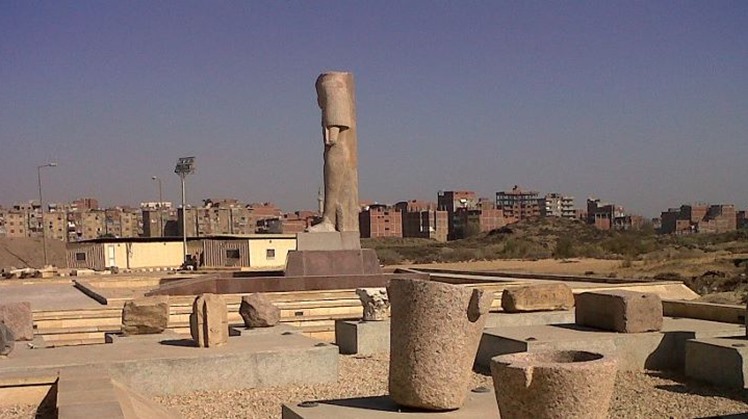Tell Basta has a long history of excavations carried out by Egyptian and foreign missions, where a Swiss Egyptologist Edward Navel worked in the Temple of Bastet between 1887 and 1889 AD. Then, excavations and excavations continued under the leadership of Labib Habashi, which resulted in the discovery of the Temple of Pepi I. 1939 AD.
The palace of Amenemhat III was also discovered by the mission of the Supreme Council of Antiquities and Zagazig University led by "Shafiq Farid" in the 1960s, and "Ahmed El-Sawy" about a decade later, then "Mohamed El-Sawy" after that, and "Ibrahim Bakr" in the late 1970s and 1980s. the last century.
The name of Tell Basta is derived from the ancient Egyptian word "Bar-Baste", and it was the main center of the worship of "Bastet", the cat goddess that was associated with the fertility of women, and played a key role in protection, according to the Ministry of Tourism and Antiquities, and Bur Bastet was the capital of the eighth region. A tenth of Lower Egypt in the era of the modern state "about 1550-1069 BC" and the country's capital during the twenty-second dynasty "945-715 BC."
Its location in the eastern Delta in the modern city of Zagazig in Sharkia Governorate made it an important commercial center through which travelers and commercial caravans pass to and from Sinai and beyond, most notably the visit of the Holy Family to Bubastis during its journey to Egypt.
Bar Bastet is the site of many monuments, including the Temple of Bastet and the statue of Queen Meritamun, wife of Ramses II (1279-1213 BC), in addition to the Temple of the Sixth Dynasty of Pepi I (around 2321 - 2287 BC). The Palace of Amenemhat III (1855-1808 BC), and a well from the Roman era.
 Tue, Dec. 28, 2021
Tue, Dec. 28, 2021